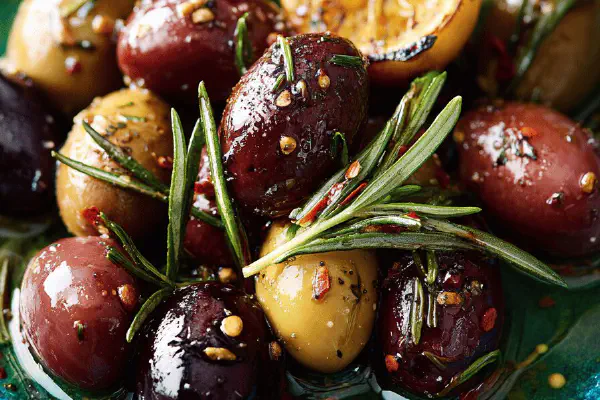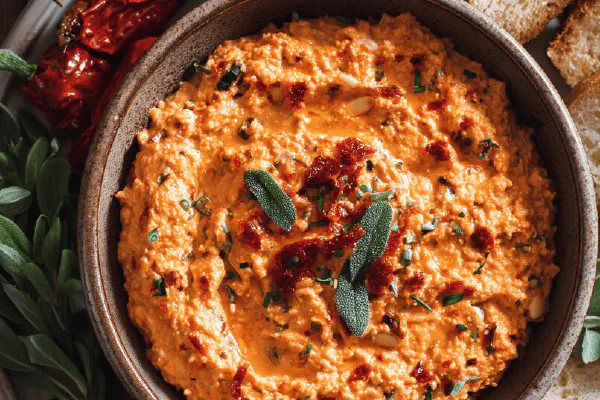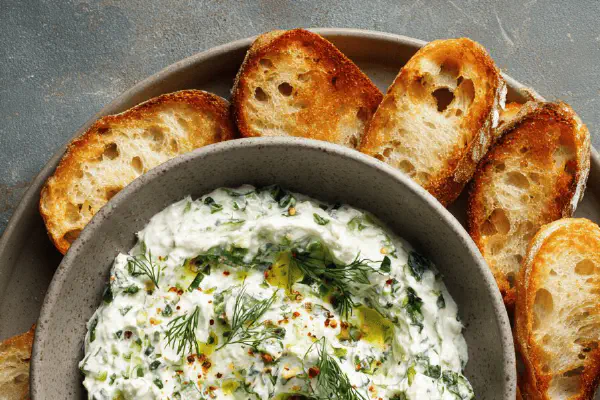Featured Recipe
Sesame-free Lemon Garlic Hummus

By Kate
"
Chickpeas simmered with bicarbonate soften faster, giving creamy texture without tahini. Garlic split between cooking and raw for depth. Zest of lemon adds brightness, balanced by yogurt for subtle tang and creaminess. Olive oil drizzled slowly for emulsification, cumin grounds flavor with gentle earthiness. Adapted ingredients include replacing some lemon juice with lime, swapping cumin for smoked paprika for warmth. Cooking time adjusted to rely on tactile doneness, not just clock. Results in rich, luscious spread that holds well refrigerated for up to 6 days.
"
Prep:
20 min
Cook:
25 min
Total:
45 min
Serves:
Approx 500 ml (2 cups)
hummus
chickpeas
Mediterranean
vegan
appetizer
Introduction
Straight chickpeas. Bicarbonate softens skins—crucial step. Without sesame paste, texture risks dry, grainy. Hence a dollop of yogurt for creaminess; replacements? Silken tofu or vegan mayo. This hummus built on balance—citrus zest vibrates, garlic split in two acts: simmered tames sharpness, raw punches freshness. Slow drizzle olive oil while blending; this emulsion keeps it luscious. Smoked paprika swaps cumin, adds earth with subtle heat—not overpowering. Cooking time fluctuates but trust the touch—soft but intact chickpeas. No tahini here, but no surrender on flavor. Plan ahead. Chill to marry tastes. Store right or it dulls. Use it thicker on toast, thinner as dip. Versatile, practical, distinct.
Ingredients
About the ingredients
Chickpeas canned or dried can be used; dried requires soaking overnight then cooking which yields better texture but takes longer. Baking soda in cooking water breaks down skins, speeds softening—do not skip or hummus feels coarse. Fresh lime zest preferred over bottled oils; adds bright aroma. Yogurt adds subtle tang and smooth mouthfeel—plant-based yogurts or sour cream substitute if avoiding dairy. Smoked paprika brings smoky warmth—if unavailable, use cumin or mild chili powder but adjust salt and acidity accordingly. Olive oil quality impacts taste heavily; avoid cheap or overly bitter oils.
Method
Technique Tips
Cooking chickpeas with bicarbonate and garlic halves softens beans and mellows garlic aromas simultaneously. Don’t rush simmer phase; visual bubbles transitioning from rapid boil to gentle simmer crucial—keeps beans intact. Very hot beans blend better if slightly cooled—hot puree may clump. Drizzle oil slowly, maintaining processor speed to emulsify properly; rushing results in separation, oily surface. Scraping sides ensures uniform texture; missed spots create lumps. Adjust consistency with reserved liquid to avoid overly dense product—aim for spreadable but scoopable consistency. Refrigerate minimum 30 minutes for flavors to integrate; serving immediately yields sharper citrus and garlic notes but less cohesion.
Chef's Notes
- 💡 Cooking chickpeas with bicarbonate loosens skins; skip and there's graininess. Watch for rolling boil, then simmer gently. Skins split—know they're ready. Use touch. Drain and cool; hot beans blend better.
- 💡 Drizzle olive oil slowly while processing; helps emulsify. Skip this, and you'll have separation. Not luscious. Scrape sides often to mix well. Missed bits create lumps. Use spatula.
- 💡 Adjust thickness with cooking liquid, slowly. Aim for spreadable that also scoops well. If too thick, adds water—don’t rush. Keep in fridge minimum 30 minutes for flavors. Meld them right.
- 💡 Yogurt adds tangy creaminess; swap for silken tofu or mayo if needed. For smoky flavor, smoked paprika works wonders. Cumin can replace but alters the taste. Keep an eye on salt.
- 💡 Chilling isn’t optional; flavors develop but aim to serve sooner if needed. Use thicker on toast or spread. Serve thinner with veggies or pita. Versatile for any occasion.
Kitchen Wisdom
What's the best way to store leftover hummus?
In airtight container, this keeps up to 6 days. Use fat layer on top—guards moisture. Or freeze, but texture shifts.
What to do if hummus is too thick?
Add some reserved cooking water, or water slowly. Blend until it reaches desired texture. Skip rushing; keep pulsing.
Can I use dried chickpeas?
Yes, but soak overnight. Longer to prep, but better texture. Use bicarb again in cooking—crucial for smoothness. Timing varies.
Garlic too strong to handle?
Boil garlic with chickpeas; it mellows flavor. Adjust raw garlic to preference; less sharp. Experiment, find balance you like. Everyone tastes differently.



